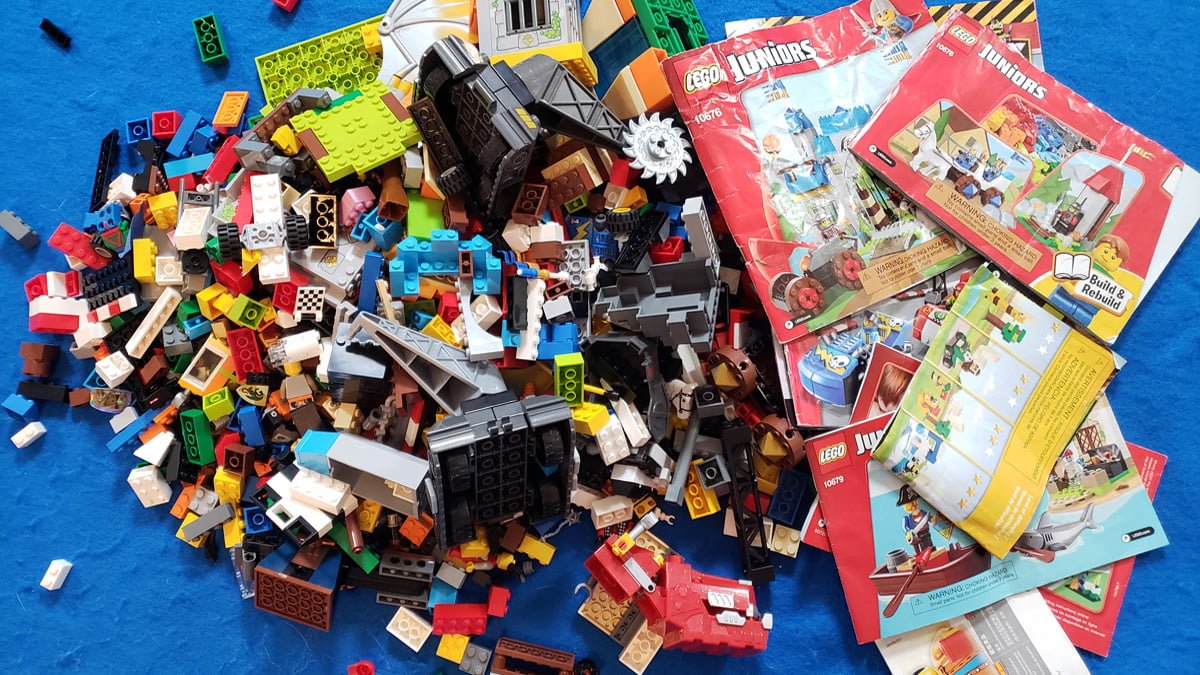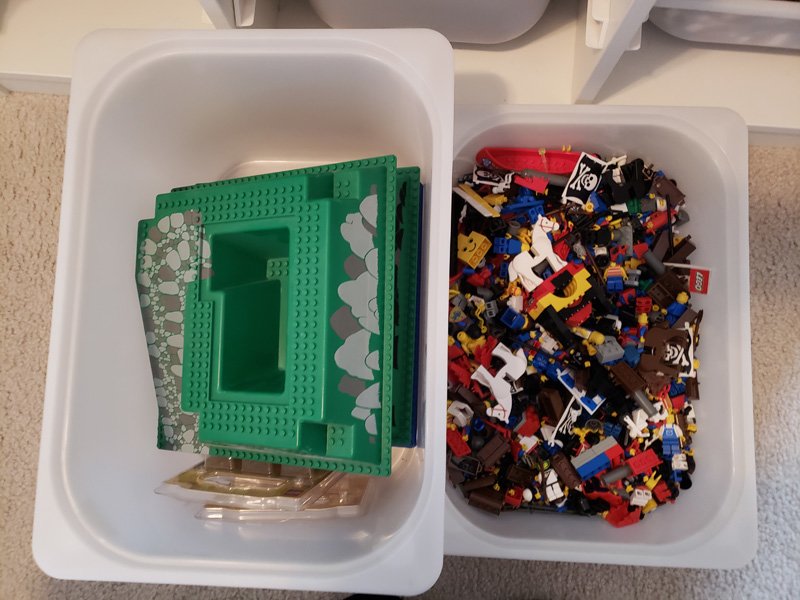
Our boys have birthdays that flank either side of Christmas, and since they are eight and five, this means LEGO has staked a very significant claim on our play loft. LEGO, and similar brands of building toys going as far back as Lincoln Logs, are often a blessing and a curse. Their value as toys that have educational value is high, but so are the pain levels when you step on a stray piece.
While kids are shuffling through their collections to look for specific parts, they seem to believe the only way to find whatever piece they need is to dump them all on the floor, where they then proceed to migrate everywhere. You’ll probably still be finding pieces all over your house once your kids go to college. The worst part is these building toys do not come cheap, so when a kid loses enough pieces that they struggle to put together a hundred dollar LEGO set, it’s extra frustrating.
Last week I wrote up ideas on how to organize toys with accessories, so this week I’m going to take on building toys. Since we have LEGO, I’ll refer to those in the article, but simply trade out any other building type toy brand you might have. My organizing philosophy for dealing with our collection worked under the idea of reaching two specific goals:
- I do not want LEGO dumped all over the floor.
- It seems to defeat the purpose in spending a small fortune on licensed sets (think Star Wars or Harry Potter) if we can never locate enough of the pieces to play with them.
Our LEGO collection actually is in two sections. One is the brand new LEGO sets our boys received, the other is the LEGO that my husband and his brothers had as kids, which we inherited. If you don’t care about trying to keep sets together (such as all the Marvel sets), you can ignore this section and go to the next. We tend to keep our newer sets in boxes with others from the same collection. We have Marvel boxes, Harry Potter boxes, and Star Wars boxes, among others. They fit into different IKEA SAMLA boxes that then fit into an IKEA KALLAX unit. As I noted in last week’s article, I am not being sponsored by IKEA in any way, I just find their products highly useful for play space organizing.

In each box, the relevant building instruction booklets go in with those sets. This has had to happen because we have more than one Star Wars box due to how many of those sets we own. Over time, the sets may come apart, but when they are all in the same box, there are way fewer LEGO to sort through in order to rebuild the set. If the boys want to play with superheroes or Jedi specifically, it’s easier for them to find those and get to playing.

The second part of our LEGO collection is the older LEGO from my husband’s childhood. We have no idea how many completed sets there are or are not at this point, and no one wants to try to find out any more, so these are the ones our kids do more free building with. We use an IKEA TROFAST unit to store them all in. Actually, we have four of these units pushed together with a giant felt cover to make a huge play table. The only reason it’s not covered in LEGO boards is that the table is used for other non-LEGO activities as well.

TROFAST units have three sizes of drawers you can put your LEGO in. The bigger ones might be better for projects in progress or the giant boards. The smaller ones are best for smaller pieces. You can organize your LEGO to whatever degree you want. If you want them sorted by size, go for it. If you don’t care about organizing by size and are just happy to have them off the floor, do what works the best for you. If you want different drawers for different types of LEGO like Star Wars in one drawer, that works too.

What I like is that the drawers store the LEGO and give kids a contained place to dig for pieces, but you also have a specific playing area that is not your floor. It is also a specific kid playing area rather than your kid’s LEGO laying siege to your kitchen/dining room table or taking over the coffee table. Our LEGO are not allowed in these areas because our more impulsive Lab-mix would eat one and the only thing more expensive than LEGO is needing a vet’s assistance in helping your dog get one out that won’t pass on its own.
Do you have any special organizers you use for building type toys? Let us know in the comments.



